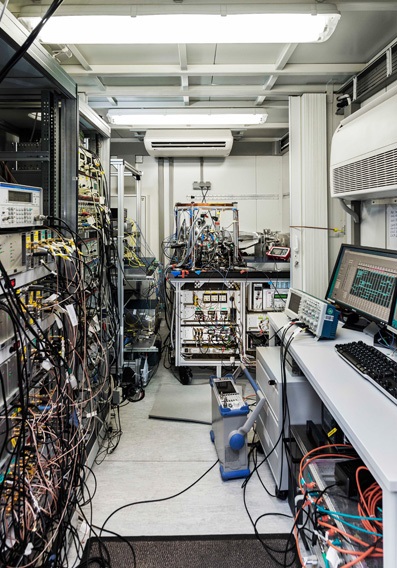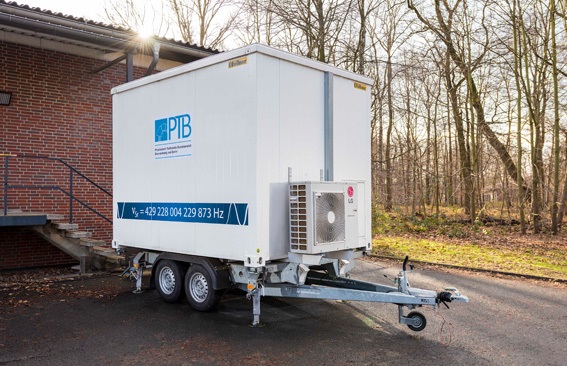13 February 2017
Optical clocks are even more accurate than cesium atomic clocks which are currently used to "make" time. Moreover, it only takes them a hundredth of the measuring duration to reach a certain measurement accuracy.
They could thus soon become not only the basis for the new definition of the SI base unit second, but also very concretely lead to enhanced measurement capabilities in geodesy. For the first time, scientists from the Physikalisch-Technische Bundesanstalt (PTB) have presented a transportable optical strontium lattice clock which is suitable for the worldwide comparison of optical clocks, for geodetic applications and for fundamental research in physics. Their results have been published in the current issue of "Physical Review Letters".
Optical clocks are deemed hot contenders for a new definition of the SI base unit of time and frequency. The SI revision due in the fall of 2018 will still be based on cesium atomic clocks because the successor has not yet been definitively decided. There are simply too many competing types of optical clocks. It is still unclear who will make the running – that is whether the definition will ultimately be based on a property of the strontium atom, the ytterbium atom or the aluminum atom, or even of another atom completely. The corresponding optical clocks have been competing neck and neck in various disciplines for years: for instance with regard to accuracy (when it comes to the smallest possible uncertainty) or stability (i.e. how long you have to perform measurements in order to obtain reliable measurement data).

When it comes to ”transportability“, there is, however, a clear winner. ”With an uncertainty of 7.4 × 10 −17 , our transportable optical strontium lattice clock has come as close to the best stationary optical clocks as required for good clock comparisons , ” Christian Lisdat, working group head, explains. And today, really good clock comparisons, as the physicist knows, are only possible under the (rare) circumstances that the compared clocks are located in the same lab or are coupled by glass fiber – as is the case with the glass fiber link between Braunschweig and Paris. ”In all other cases, you will have to rely on conventional satellite comparisons such as those between cesium atomic clocks – but then, you will lose the accuracy advantage an optical clock brings about, ” Lisdat explains. From now on, an optical clock can easily be transported to its counterpart where they can be compared with each other. This is not an end in itself, but a practical necessity: only with a global network of clocks is it possible to supply the precise time signals required by the financial, communications, satellite navigation and energy utility systems.
Also with regard to stability (also a strength of PTB's stationary strontium lattice clock), this transportable variant has left its competitors behind – so much so that it has even woken the interest of geodesists: ”After measuring times of less than an hour, we have already reached the range of 10 −17 which is necessary to measure height differences of approx. 10 centimeters. With two clocks and a link between them, this also works with places that are located very far away, across a continent for instance. ” Since such an optical clock achieves in just one step what took previous geodetic methods numerous individual steps, Lisdat and his team have been working in close cooperation with scientists from Leibniz University Hannover within the scope of the DFG 1128 geo-Q Collaborative Research Centre.
What you discover when you take a look inside the air-conditioned car trailer that houses the transportable clock is a labyrinth of cables, lasers and computers. ”Accommodating all the laser systems to cool down and trap the atoms as well as the required electronics in such a confined space was no trivial task, ” Christian Lisdat comments. The trickiest part turned out to be the transportable version of the interrogation laser (i.e. the laser which determines the correct frequency of the strontium atoms). However, the small trailer, which bears the inscription of the optical clock frequency used on its exterior, was packed and tested during two measurement campaigns outside PTB's campus. Although further enhanced components are already under development, this clock is already ten times as precise and a hundred times more stable than the best transportable cesium fountain clocks.
Thus, PTB's transportable optical clock is ready for geodetic height measurements, international clock comparisons and precision measurements of fundamental constants – and has taken a decisive step towards applications in space.
es/ptb















